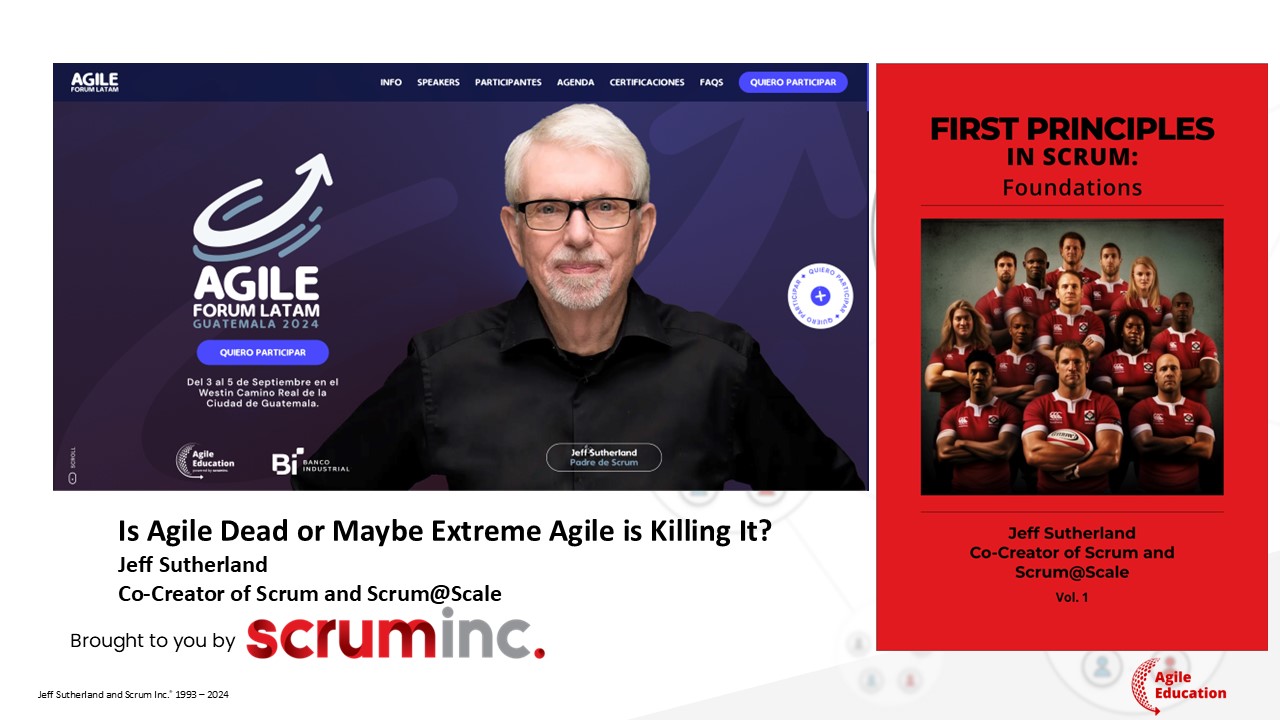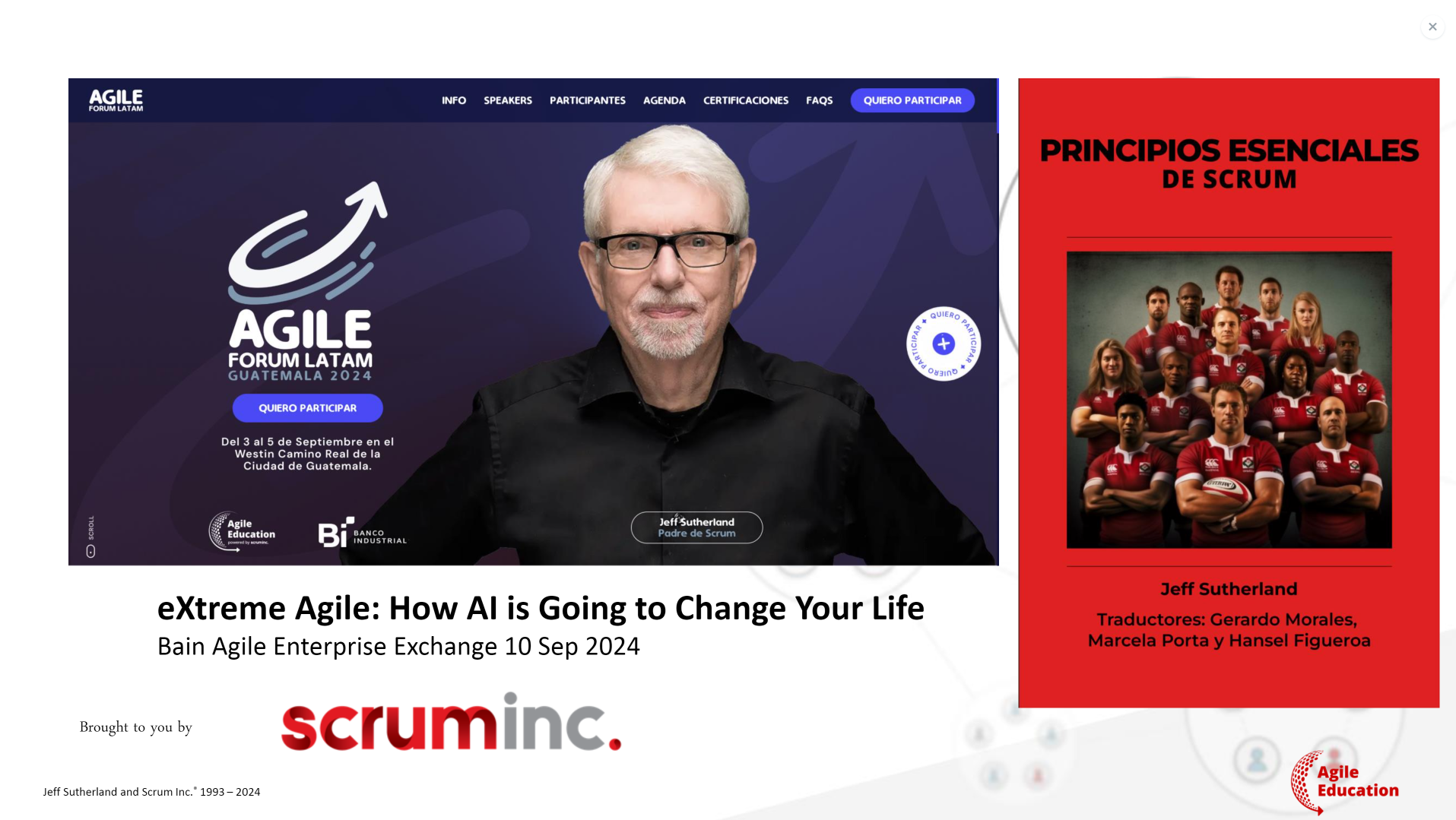Automating Sprint Planning: Optimize Your Scrum Team’s Velocity Scrum teams often struggle to determine how much work to pull into their sprints. The result? Sprints are frequently late, teams become overwhelmed, and productivity suffers. Leveraging AI for sprint planning solves these issues by automating a crucial Scrum principle known as Yesterday’s Weather. Want to learn more? Listen to our podcast. What Is Yesterday’s Weather? “Yesterday’s Weather” is a Scrum technique that predicts the work a team can accomplish based on their average velocity in recent sprints. This proven practice helps teams avoid over-committing and under-delivering, enhancing predictability and satisfaction. Automating Yesterday’s Weather with AI AI tools integrated with Jira automation streamline sprint planning, ensuring accuracy without manual effort: Real-World Example If your team completed 52, 58, and 64 points in the last three sprints, your average velocity is 58 points. If a key team member is out for one day, contributing an average of 5 points daily, your adjusted velocity becomes 48 points. Accounting for an average of 5 unplanned points, your sprint plan is now: Why Adopt AI for Sprint Planning? Implementing AI automation significantly enhances sprint outcomes by: Embrace the Future of Sprint Planning Scrum Masters, Product Owners, and Agile Teams can dramatically improve their efficiency by adopting AI for sprint planning. Trust data-driven sprint forecasting and free your team to focus on delivering real value. Ready to revolutionize your sprint planning with AI? Start today!
Category Archives: Uncategorized
AI and the Product Backlog: ChatGPT Training in Action
AI and the Product Backlog: ChatGPT Training in Action This post is part of our ongoing series exploring AI’s role in Agile. In our previous article, we examined how AI assists with backlog refinement—what worked and where it fell short. Today, we’re diving into the practical side: how to train ChatGPT to break down high-level tasks, distribute workload, and prioritize your sprint backlog more effectively. But here’s the critical piece: not all AI models are equal when it comes to backlog management. ChatGPT-4o allows you to create custom GPTs, giving you control over training data and backlog refinement. Other versions—like o1 and o3—lack this feature, which significantly limits how well they can adapt to your specific Agile processes. This means that with ChatGPT-4o, you can create a tailored AI assistant that securely retains and refines your backlog management approach over time. In contrast, o1 and o3 lack the ability to store and process your critical data in a dedicated environment, creating limitations that require constant manual intervention. This makes a world of difference when working with proprietary backlog data, team-specific sprint structures, and custom workflows. Bridging the Gap Between Theory and Practice We’ve talked a lot about the why of AI-driven backlog refinement. The main takeaway? While ChatGPT isn’t fully autonomous, it’s already proving invaluable as an assistant—quickly drafting user stories, recalling repetitive tasks, and suggesting preliminary priorities. But how do we turn these promises into actual sprint outcomes? Below, we’ll walk you through the steps we use to train ChatGPT. You’ll see how to feed it the right mix of inputs—from team capacity to sprint history—so that each sprint it proposes is realistic, well-prioritized, and aligned to your broader product goals. If ChatGPT is going to break down your backlog accurately, it needs context. The more structured your inputs, the more refined the output. Think of it like teaching a junior team member. 1. Introducing Scrum Fundamentals By absorbing the key principles from Jeff Sutherland’s Scrum: The Art of Doing Twice the Work in Half the Time, ChatGPT gains vital context for effective backlog refinements. Core Scrum values—like iterative development, transparency, and continuous improvement—guide how tasks are broken down, story points are assigned, and priorities are set. This ensures each recommendation aligns with real-world Scrum practices, helping your team deliver maximum value each sprint. 2. Lay the Foundations: Team & Project Context Before ChatGPT can break down your backlog accurately, it needs to understand the who and the what of your project. This ensures ChatGPT won’t overload any single role, keeping your sprint plan realistic. Giving ChatGPT an overview of your product’s purpose, target audience, and technology stack helps it suggest tasks in the right context (for example, pointing out UI considerations if you’re using React or factoring in SEO if it’s a marketing site). By laying out team details and project context first, ChatGPT can align tasks to your actual capacity and overarching goals. Think of it like onboarding a new team member: the more background they have, the smarter their contributions. 3. Provide Relevant Sprint History As much as ChatGPT learns on the fly, it isn’t automatically synced to your Jira backlog. Manually give it a glimpse of your last few sprints: By referencing past sprints, ChatGPT can better gauge your team’s true velocity and spot patterns in repetitive tasks or underestimation. The goal is to teach the AI how your team typically works, so it can propose more accurate story points and prioritization sequences. 4. Distinguish Repetitive vs. New Tasks Now that ChatGPT knows your team, your project, and your sprint history, it’s ready to handle the what of your backlog. Once ChatGPT sees which tasks are repeated and which are brand-new, it can auto-fill recurring items into your sprint plan while dedicating extra effort to refining the new features. 5. Prioritizing Backlog With team & project context, past sprint insights, and the actual tasks (repetitive or new) in place, ChatGPT is primed to: Prompt example: “Hi ChatGPT! Here is our latest Product Backlog, along with a new feature we want to add this sprint: Let’s aim for a well-balanced sprint that delivers maximum value while keeping scope realistic. Please provide a clear breakdown of tasks, owners, and points, along with short rationales for each decision.” 6. Validate & Refine No AI is an outright replacement for human judgment. Once you have ChatGPT’s proposed breakdown, gather your Scrum team for a quick review: ChatGPT will respond with a proposed sprint plan—creating user stories, assigning owners, and even explaining why it prioritized one feature over another. It’s not perfect yet, but it drastically reduces manual effort. We’ve found that this human-AI collaboration leads to faster planning cycles. ChatGPT’s initial draft is often 70–80% there, leaving you to finesse the final 20%. 7. Common Pitfalls—and How We’re Tackling Them Despite its progress, ChatGPT isn’t infallible. Here are the biggest hiccups we’ve encountered: Why This Matters for Agile Teams Efficiency Gains: By automating parts of backlog refinement, we’ve reclaimed hours of meeting time.Consistency: ChatGPT treats repetitive tasks the same way every time, avoiding human error or forgetfulness.Enhanced Focus: With admin overhead out of the way, teams can focus on strategic decisions, innovation, and solving user problems. Still, AI doesn’t replace the need for a skilled Scrum team. It’s an assistant—helping you catch oversights, stay organized, and move faster. The ultimate decisions, trade-offs, and creative problem-solving remain human territory. Ready to Supercharge Your Next Sprint? We’re not at full automation yet, but each iteration brings us closer to the dream of AI-driven backlog refinement. Stay tuned for our next post, where we’ll dig even deeper into the nitty-gritty of AI-assisted Scrum. Got Questions? Because the future of Agile isn’t about replacing teams with AI—it’s about empowering them to do their best work.
AI and the Product Backlog: Progress and Challenges
AI and the Product Backlog: Progress, Challenges, and the Road Ahead Managing AI and the Product Backlog efficiently is critical for Agile teams. The backlog is the heartbeat of a Scrum team—guiding priorities, ensuring focus, and helping teams deliver value in each sprint. But as organizations scale and complexity grows, backlog refinement becomes a time-consuming task. That’s where AI comes in. The promise? An AI-powered backlog refinement process that streamlines prioritization, tracks dependencies, and optimizes sprint planning. The reality? We’re getting closer, but full automation isn’t here—yet. Our team has been pushing the boundaries of AI-assisted backlog refinement, using ChatGPT and structured workflows. While we’ve made significant progress, gaps remain, and we’re learning what it takes to truly integrate AI into Scrum. This blog is part of a series exploring AI’s role in Agile. Today, we’re breaking down what worked, what didn’t, and what comes next in AI-driven backlog refinement. How AI Helps in Backlog Refinement (So Far) We’ve experimented with ChatGPT-4o to assist in Product Backlog management. Our goal? To automate as much of the refinement process as possible, while keeping human oversight where needed. AI Can Already Help With: ✔ Identifying repetitive tasks – AI can recognize recurring backlog items from past sprints.✔ Organizing backlog inputs – AI can structure information from multiple sources, including Dropbox, Jira, and meeting notes.✔ Suggesting prioritization – AI can analyze urgency and dependencies to make preliminary task recommendations.✔ Generating backlog descriptions – AI can draft definitions and descriptions based on past similar tasks. These capabilities reduce manual effort, helping the team focus on higher-value work. But despite this progress, AI isn’t fully autonomous yet. What AI Still Can’t Do (Yet) Even with structured inputs, we encountered key challenges: ❌ Lack of Agile Context – AI doesn’t inherently understand backlog prioritization principles without extensive training. It struggles with story point allocation, sprint balancing, and team capacity constraints. ❌ No Real-Time Sprint History Analysis – AI can’t yet pull from previous sprint data dynamically. We had to manually provide sprint histories to give it a learning baseline. ❌ Inconsistent Task Classification – AI occasionally misclassifies tasks, requiring manual review to correct categorizations between UX/UI, development, or content-related items. ❌ No Deep Scrum Knowledge (Yet) – We had to manually insert key concepts from Scrum: The Art of Doing Twice the Work in Half the Time because AI models aren’t fully trained in deep Agile principles. The takeaway? AI is a powerful assistant, but not yet a replacement for skilled Scrum teams. Lessons Learned and the Path Forward Despite these limitations, we’ve seen huge efficiency gains when AI is used as an enhancer, not a replacement for backlog refinement. Here’s what we’ve learned: 1. AI Needs Structured Inputs 📌 AI performs best when it receives clearly formatted data. We provide: 2. Human Oversight is Essential 📌 AI can suggest priorities, but Scrum teams must validate them. We use incremental reviews to catch errors before sprints are finalized. 3. Future AI Models Will Close the Gaps 📌 We plan to integrate newer AI releases with deeper Agile understanding. Future iterations should: We’ll be testing new AI models soon—stay tuned for updates. AI and Agile: A Work in Progress The dream of fully AI-powered backlog refinement isn’t here yet—but we’re making real progress. AI is already helping reduce manual backlog work, but Scrum teams still need to guide prioritization and oversee refinement sessions. The future? A hybrid approach where AI handles routine tasks, and teams focus on strategic decision-making. This is just the beginning of our AI + Scrum exploration. In upcoming posts, we’ll dive deeper into:🔹 AI-assisted sprint planning and capacity forecasting🔹 How AI can improve user story writing and refinement🔹 The role of machine learning in Agile team efficiency Want to Optimize Your Agile Workflow? 📖 Read Jeff Sutherland’s books to deepen your understanding of high-performance Scrum. Shop Now 📅 Book a consultation to see how AI and Agile can work together in your team. Schedule Here 🚀 The future of Agile isn’t AI replacing teams—it’s AI empowering them. Let’s build it together.
Mastering Agile Spikes for Smarter Resource Management
Mastering Agile Spikes for Smarter Resource Management Agile thrives on adaptability, but uncertainty can derail even the best-planned sprints. This is where Spikes come in—short, focused research efforts that help teams clarify unknowns before committing to full-scale development. Though originally from Extreme Programming (XP), Spikes have become an essential strategy for Scrum teams looking to optimize efficiency while maintaining sprint velocity. Dr. Jeff Sutherland, co-creator of Scrum, has long emphasized the need for structured, time-boxed learning in Agile. When managed effectively, Spikes reduce risk, streamline development, and prevent technical debt from spiraling out of control. For a deeper exploration of how to leverage Spikes effectively, tune into our recent podcast episode here: Mastering Agile Spikes for Smarter Resource Management. In this blog, we’ll explore the origins of Spikes, their role in Agile today, and how teams can strategically manage them for maximum impact. A Brief History of Spikes The XP Influence Spikes first emerged in the late 1990s within Extreme Programming (XP), a methodology pioneered by Kent Beck. The term was used to describe exploratory tasks that helped development teams tackle high-risk aspects of user stories. Key milestones in the evolution of Spikes: By the early 2000s, Spikes were widely recognized as an essential risk-mitigation strategy in Agile, evolving beyond XP into Scrum and hybrid Agile models. Optimizing Spikes in Scrum Why Spikes Matter in Agile Teams A well-executed Spike prevents teams from getting stuck on unknowns and allows them to: However, without proper control, Spikes can consume excessive sprint resources. That’s where strategic management comes in. The Role of the Product Owner in Managing Spikes In Scrum, the Product Owner (PO) plays a crucial role in ensuring that Spikes remain focused and resource-efficient. Here’s how: 1. Setting a Point Cap 🔹 The PO assigns a fixed number of story points to a Spike, ensuring it doesn’t overshadow feature development. 2. Incremental Review 🔹 Once the Spike reaches its point limit, the team presents findings to the PO, who determines whether further investigation is necessary. 3. Decision to Extend or Pivot 🔹 If the Spike delivers enough insights, development can proceed. If not, the PO decides whether additional resources are justified or if a different approach is needed. This disciplined approach prevents Spikes from turning into open-ended research efforts that slow down velocity. How to Integrate Spikes into Sprint Planning For effective Spike management, teams should follow these best practices: These simple steps keep teams agile, allowing them to resolve unknowns efficiently without sacrificing sprint goals. Case Study: Agile Spikes in Action At the Johns Hopkins Applied Physics Laboratory, a billion-dollar research institution, Spikes played a key role in accelerating scientific discovery. This example highlights how strategic Spike management enables rapid progress, even in complex research environments. Key Takeaways for Agile Teams By incorporating these strategies, Agile teams can achieve faster, more predictable delivery cycles while minimizing technical risk. Take Agile to the Next Level Want to optimize your Agile practices and scale efficiency across teams? 📖 Read Jeff Sutherland’s books to gain expert insights into high-performance Agile frameworks. Shop Now 📅 Book a consultation with Dr. Jeff Sutherland to revolutionize how your team works. Schedule Here Master Agile. Manage Uncertainty. Accelerate Success. References
Is Agile Dead? How AI and Extreme Agile Redefine Work
Is Agile Dead? How AI and Extreme Agile Redefine Work The Agile methodology has been the cornerstone of modern software development and team collaboration, but the rapid rise of AI is challenging its very foundation. Dr. Jeff Sutherland, co-creator of Scrum and Scrum@Scale, argues that while Agile is far from dead, the advent of Extreme Agile, driven by AI, is reshaping the framework—and the workforce—beyond recognition. In his presentation, Is Agile Dead or Maybe Extreme Agile is Killing It?, and accompanying podcast, Dr. Sutherland provides critical insights into how AI accelerates Agile practices and what it means for the future of work. The Rise of Extreme Agile AI is revolutionizing Agile by taking productivity to unprecedented levels. Agile teams augmented by AI will become 30–100 times more productive, a transformation poised to reshape industries by 2030. But this acceleration comes at a cost. Traditional Agile roles, particularly in software development, are being replaced as AI proves to be faster, safer, and more reliable. AI-powered tools like Claude 3.5 and GitHub Copilot are no longer assistants—they are core contributors, performing tasks from code generation to decision-making with unparalleled efficiency. In this new era of Extreme Agile, survival requires adaptation. The Agile Technology Stack Dr. Sutherland introduces the concept of the Agile Technology Stack, a multi-layered system that integrates principles from physics, biology, and AI to scale productivity: This integrated stack moves Agile teams beyond traditional methods, enabling them to tackle complex systems at scale while maintaining flexibility. Post-Labor Economics: A New Workforce Paradigm AI is not just transforming Agile—it’s redefining work itself. As economic imperatives drive companies to replace labor-based roles with AI-driven systems, Agile frameworks like Scrum and Scrum@Scale become essential for navigating this shift. Dr. Sutherland highlights the importance of transitioning from labor-based to investment-based economic models, where individuals leverage AI to generate and manage value. For organizations, this means: Lessons from Industry Leaders Case studies illustrate how Extreme Agile is already delivering results: These examples demonstrate that AI-powered Agile frameworks are not just theoretical—they are actionable and transformative. Preparing for the Future of Agile Agile isn’t dead—it’s evolving. Teams that embrace AI as a central component of their workflows will thrive, while those clinging to outdated methods risk obsolescence. By 2030, no Scrum team will be employable without AI integration, and programming as we know it will be replaced by AI-managed systems. Dr. Sutherland’s presentation underscores the urgency of this transformation. To survive and succeed in the era of Extreme Agile, leaders must act now, embracing AI as an enabler of unprecedented growth. Contact Dr. Jeff Sutherland Ready to future-proof your organization? Contact Dr. Jeff Sutherland to learn how Scrum@Scale and AI can drive your transformation. Access the full presentation here and tune into the podcast for deeper insights. The future of Agile is here. Are you ready to lead the change?
Agile AI Integration: Transforming Business at Warp Speed
Agile AI Integration: Transforming Business at Warp Speed At JVS Management, Agile AI Integration isn’t just a trend—it’s a transformative practice redefining project management and efficiency. Our latest development, the ‘Agile Technology Stack,’ showcased at the Bain Agile Enterprise Exchange, exemplifies how integrating Artificial Intelligence with Agile methodologies can dramatically enhance operational effectiveness. Unveiling the Agile Technology Stack Our “Agile Technology Stack” demonstrates a meticulously structured layering of technologies, from core computational algorithms to sophisticated application interfaces, all optimized for Agile operations. This stack is not merely about technology; it’s about creating an ecosystem where technology and Agile practices enhance each other, ensuring faster, more responsive project outcomes. Enhancing Team Capabilities with AI Integrating AI with established Agile frameworks like Scrum and Kanban, JVS Management empowers teams to perform at peak efficiency. AI’s robust analytical capabilities allow for real-time data processing, enabling predictive planning and decision-making. This ensures that our teams are not just reacting to changes but are proactively managing potential disruptions. Case Study: Transforming Expense Management The “One Second Expense Reports” system exemplifies our AI-driven Agile methodology. Originally designed to expedite expense reporting, the application of AI has slashed processing times even further, allowing for near-instantaneous report generation. This case study illustrates the profound impact of AI on streamlining and improving routine financial operations. Explore the Full Potential of Agile AI Integration We invite you to delve into the intricacies of our Agile Technology Stack to understand how AI can transform your project management landscape. Download our detailed guide to gain insights into each layer of the stack and its potential impacts on your operations. Download the Agile Technology Stack Overview Why Agile AI Integration Matters In today’s rapidly evolving business environment, staying ahead means being able to not only adapt to changes but also anticipate them. Our Agile AI Integration places JVS Management at the forefront of this dynamic, offering both our teams and our clients a competitive edge through enhanced agility and informed decision-making. Read more about Agile AI Integration and its benefits Join us at JVS Management as we continue to pioneer innovations that redefine the standards of project management and operational excellence. Embrace the future of business technology with us.
AI and Scrum Business Future: Building Tomorrow’s Giants
AI and Scrum Business Future: Building Tomorrow’s Giants In the latest CEO Insights podcast, hosted by Vitaly Geyman, Dr. Jeff Sutherland, the inventor of Scrum, shares insights on the future of business powered by AI and Scrum. He’s currently developing a company model where a single human employee can run an entire operation with AI systems handling the core business functions. This podcast series marks the beginning of several conversations between Sutherland and Geyman, focusing on how AI and Scrum are set to transform the business landscape. You can listen to the full podcast here. How AI and Scrum Are Shaping Business Dr. Sutherland’s vision for the future revolves around the role of AI in Scrum. He’s pioneering a business model where AI systems manage tasks like sprint planning, backlog prioritization, and customer support—leaving humans to focus on high-level strategy. This innovation could allow companies to scale quickly while drastically reducing human involvement, which aligns with the idea of creating “million-dollar companies” with only one human employee. AI-Driven Productivity in Scrum During the podcast, Sutherland explains how integrating AI into Scrum can lead to hyper-productive teams by automating routine tasks. Here are some key areas where AI enhances Scrum practices: By automating these tasks, AI ensures that Agile teams can focus on innovation and delivering business value rather than repetitive processes. A Partnership for Future Insights The collaboration between Vitaly Geyman and Dr. Jeff Sutherland is only beginning. Their series of podcasts will continue exploring the role of AI and Scrum in business, Agile transformations, and scaling businesses efficiently with minimal human resources. These discussions will provide exclusive insights for business leaders looking to leverage AI in Scrum to drive growth. Getting Ready for the AI and Scrum Business Future To prepare for the AI-driven future, Dr. Sutherland recommends: Stay tuned for more episodes in the CEO Insights podcast series, where Geyman and Sutherland will further explore the transformative power of AI and Scrum in building tomorrow’s business giants. Listen to the full podcast here.
Navigating Complexity in Scrum: The Power of Entropy, Self-Organization, and Patterns
Navigating Complexity in Scrum: The Power of Entropy, Self-Organization, and Patterns By Dr. Jeff Sutherland, creator of Scrum, author of “First Principles in Scrum,” and pioneer in Agile methodologies with 61 years of software development experience. “Scrum is mandatory reading for any leader, whether they’re leading troops on the battlefield or in the marketplace. The challenges of today’s world don’t permit the luxury of slow, inefficient work. Success requires tremendous speed, enormous productivity, and an unwavering commitment to achieving results. In other words, success requires Scrum.” – General Barry McCaffrey Did you know that a single Scrum practice can lead to a 500% increase in team velocity? Or that a product developed using these principles could still be considered one of the best development tools three decades later? Read on to discover how understanding fundamental principles from physics can revolutionize your Agile practice. The Power of First Principles in Action Before we dive into the core concepts, let me share a remarkable case study that demonstrates the transformative power of these principles: In 1994, the first Scrum team introduced the daily meeting in their second sprint. By the third sprint, this simple practice helped them hit the sweet spot of self-organization. The entire sprint finished in just a few days – a staggering 500% increase in velocity. We had to hire a full-time Product Owner just to keep up with the team’s pace! The resulting product shipped in just 3 months. Computer World and PC Week hailed it as the best product they had ever seen in that market space. Even more impressively, 30 years later, the head of Agile at IBM (and later at PMI) stated in a meeting of industry leaders that he was still using this product the week before. He considered it one of the five best development tools ever created. This real-world example showcases how applying the right principles can lead to sustained excellence and innovation. Now, let’s explore the key concepts that can help your team achieve similar breakthroughs. Entropy: The Constant Challenge Entropy, a core concept in thermodynamics, dictates that all systems tend to decay over time. In Scrum, this translates to the natural degradation of processes and productivity without continuous effort. To combat entropy, teams must: – Apply energy through regular sprints – Commit to continuous improvement – Maintain a relentless focus on goals By taking this structured approach, teams can maintain order and predictability, ensuring sustained performance over time. Read the Entropy Chapter in First Principles in Scrum Self-Organization: Discovering Effortless Flow Wolfram’s research reveals that self-organization can occur spontaneously, defying entropy. For Scrum teams, this phenomenon holds the key to achieving extraordinary results with minimal effort. The goal is to: – Iterate rapidly – Embrace innovation – Seek spaces where work flows effortlessly When teams find this sweet spot, as our case study team did, they often achieve twice the work in half the time with less effort – a hallmark of truly self-organizing teams. Read the Self-Organization Chapter in First Principles In Scrum Patterns: The Guide to Hyperproductivity Patterns serve as breadcrumbs guiding teams to spaces of effortless work. Inspired by Christopher Alexander’s pattern language, these reusable solutions to common problems are crucial for navigating complexity. In Scrum: – Patterns like “Teams that Finish Early Accelerate Faster” provide structured approaches to challenges – Recognizing and applying patterns helps teams refine processes and boost efficiency – Patterns act as a map, leading teams to spaces where self-organization and effortless work occur Read the Patterns Chapter in First Principles in Scrum The Intersection of Team and Product Excellence These principles extend beyond team performance to product design itself. In the vast space of possible products, there are points where: – Self-organization occurs spontaneously – The product suddenly works effortlessly – Customers fall in love with the result This phenomenon applies to all complex adaptive systems, from individual cells to entire planets. Embracing First Principles for Transformative Results By understanding and applying the concepts of entropy, self-organization, and patterns, Scrum teams can: 1. Overcome the natural tendency towards disorder 2. Discover states of peak productivity 3. Navigate complexity with proven solutions 4. Create products that truly resonate with users These principles offer a path to extraordinary results, transforming how teams operate and innovate. “In the world of Agile, understanding the principles of entropy, self-organization, and patterns can lead to extraordinary breakthroughs in productivity and innovation.” – Dr. Jeff Sutherland Ready to Transform Your Scrum Practice? You’ve now had a taste of the powerful concepts explored in “First Principles in Scrum.” The chapters on Entropy, Self-Organization, and Patterns provide a foundation for understanding the deeper principles that drive successful Agile teams. But this is just the beginning. The full book dives deeper into these concepts and provides practical strategies for implementing them in your daily Scrum practice. If you’re ready to take your team’s performance to the next level and create products that truly stand out in the market, it’s time to get the complete picture. Don’t miss out on the opportunity to unlock your team’s full potential. You’ve read a few chapters – now it’s time to get the whole story! leanpub.com/firstprinciplesinscrum Transform your approach to Scrum – your team and your products will thank you. About the Author: Dr. Jeff Sutherland is the creator of Scrum and a pioneer in Agile methodologies. With an astounding 61 years of software development experience, beginning in 1963 at West Point, Dr. Sutherland has been at the forefront of innovative software development practices for decades. He is the author of “First Principles in Scrum” and has helped countless teams across various industries achieve hyperproductivity and create innovative products that stand the test of time. Dr. Sutherland’s work has revolutionized project management and product development, making him one of the most respected voices in the Agile community.
AI-Driven Retrospective Analysis for Continuous Improvement
AI-Driven Retrospective Analysis for Continuous Improvement AI-driven retrospective analysis is essential for continuous improvement in Agile product development. By leveraging AI tools like ChatGPT and Otter.ai, our team enhances the retrospective process, gaining deeper insights and driving actionable improvements. The power of AI improves 10x every six months so this gets better and better. This blog will explore how we use AI to analyze retrospective data and improve our sprint planning. General Process: How We Use AI in Retrospectives Each sprint, we upload tasks along with our initial estimates and ChatGPT’s estimates. At the end of the sprint, we revisit these estimates with the team, record the real effort spent, and explain to ChatGPT why there were differences between the estimates and the actuals. This iterative training helps ChatGPT understand more with each sprint, leading to increasingly accurate estimations. By leveraging ChatGPT, we have shortened the sprint planning estimation points process from 45 minutes to only 1 minute, as the only task required is uploading the data from the previous sprint. Steps to Effective Retrospective Analysis Step 1: Collecting Retrospective Data We begin by using Otter.ai to record our retrospective meetings. Otter.ai transcribes these meetings, capturing all the discussions, feedback, and action items. Questions to ask ChatGPT: Step 2: Analyzing Data with ChatGPT Once the transcriptions are ready, we upload them to ChatGPT. ChatGPT analyzes the data to identify patterns, recurring issues, and areas for improvement. Questions to ask ChatGPT: Step 3: Identifying Patterns and Improvement Areas ChatGPT’s analysis helps us identify patterns and areas for improvement. We discuss these findings with the team to develop actionable improvement plans. Questions to ask ChatGPT: Step 4: Implementing Actionable Improvements We implement the action plans developed from ChatGPT’s insights and track their impact in the next sprint. Questions to ask ChatGPT: Conclusion By integrating AI into our retrospective process, we continuously improve our sprint planning and execution. ChatGPT and Otter.ai provide valuable insights that drive actionable improvements, enhancing our ability to deliver value consistently.
AI in Sprint Planning Enhances Story Point Estimation
AI in Sprint Planning Enhances Story Point Estimation Introduction Accurate story point estimation is crucial for successful sprint planning in Agile project management. Leveraging AI in sprint planning with tools like ChatGPT and Otter.ai, our team enhances the estimation process, leading to more accurate and reliable sprint plans. This blog will explain how we train ChatGPT and provide step-by-step guidance on improving story point estimations. “By leveraging ChatGPT, we have shortened the sprint planning estimation points process from 45 minutes to only 1 minute, as the only task required is uploading the data from the previous sprint.” General Process: How We Use AI in Story Point Estimation Each sprint, we upload tasks along with our initial estimates and ChatGPT’s estimates, enhancing AI in Sprint Planning effectiveness. At the end of the sprint, we revisit these estimates with the team, record the real effort spent, and explain to ChatGPT why there were differences between the estimates and the actuals. This iterative training helps ChatGPT understand more with each sprint, leading to increasingly accurate estimations. Step-by-Step Process: Detailed Example: Conclusion Integrating AI into our story point estimation process significantly enhances our ability to create accurate and reliable sprint plans. ChatGPT and Otter.ai streamline the estimation process, reduce the time required, and continuously improve our estimation accuracy. By following this detailed process, we ensure that our sprint planning is efficient and effective, enabling us to deliver consistent value in our projects. Additional Resources: To see an example of this process in action, check out our presentation “Using AI in Story Points Estimation.” This PowerPoint is available for download in the Resources section under Presentations.










